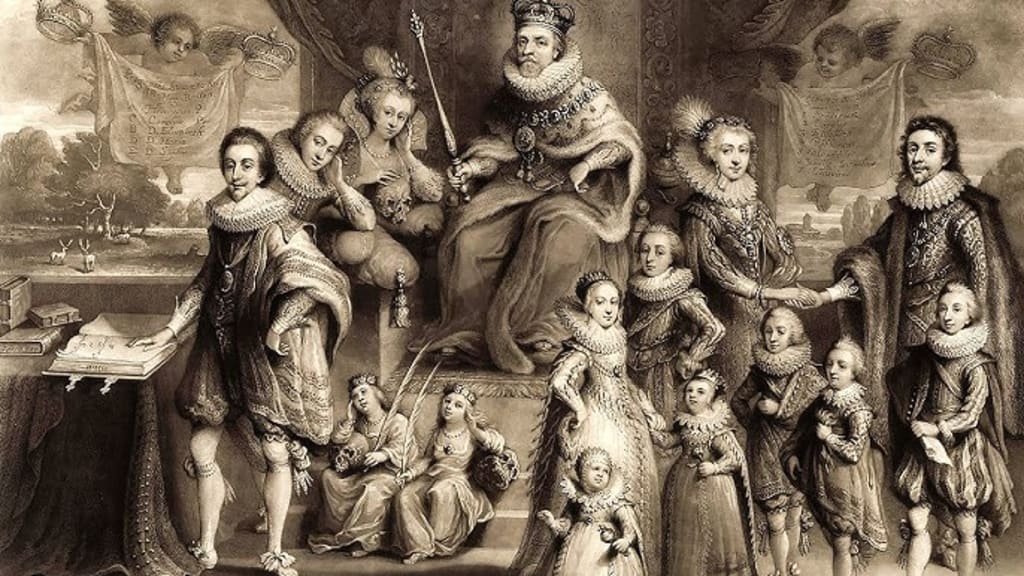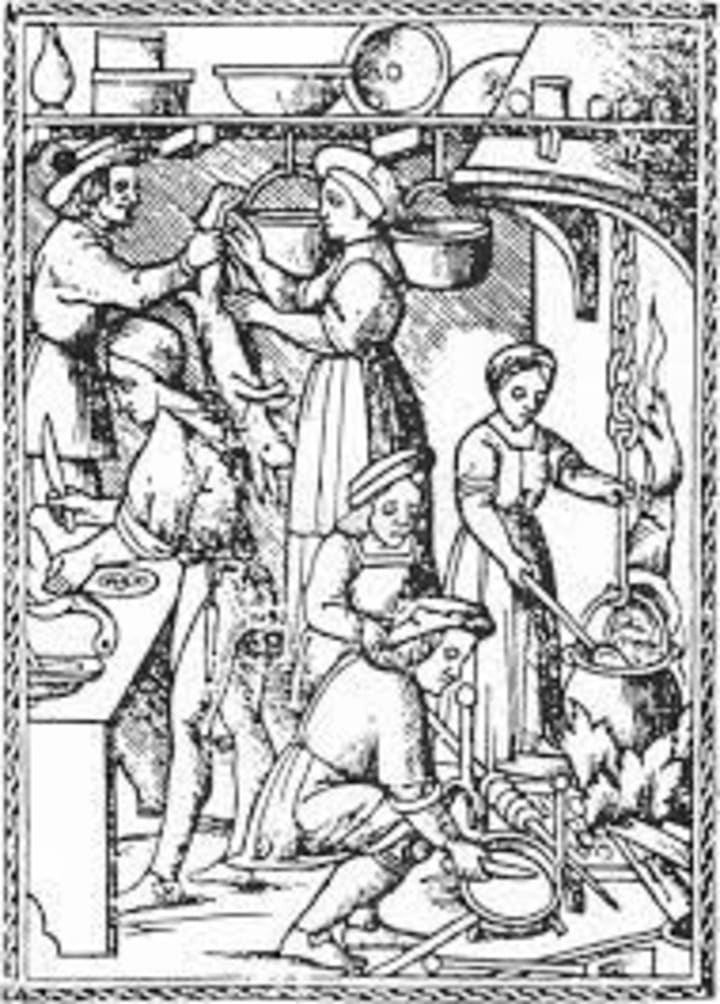Today's Lesson is the Stuart Era
What Was Life Like?

Good morning, today we will be looking at what life was like during the Stuart Era. The years are 1603 to 1714 and four Kings and two Queens reigned over England at this time. Most of the population were poor, with many living in real poverty. There was a surge in the population which had the knock-on effect, impacting the living standards which added to the poverty and many were hungry. It was at this time in history that The Poor Laws were introduced, with the aim to help relieve life for the very poorest of people.
The great majority of people were ‘employed’ by a master who provided room, food and wages. However, the very poorest, who could not work, had to rely on charity or begging. For them, the aim of each day was to ‘find’ the next meal, especially during the first half of the Stuart Era. Everyone depended on the harvest and during the Civil war, the hungry soldiers (whose pay was already in arrears) plundered the farmers livestock and food, which led to widespread starvation.

Whilst many worked on farms, others lived in towns and cities which were crowded and congested. It is believed that the Great Plague (1665) spread because of the overcrowded slums. During this same Great Plague, the wealthy and the middle-class could ‘flee’ to cleaner parts of England, but the poor could not afford to move and many died.
In towns, many were employed as shoemakers, smithies, saddlers, glovers and chimney sweeps (as well as other jobs). On the streets, everything was sold from mops to oysters. Again, prostitution was an alternative ‘job’ for young women.
Life for women was very different when compared with today. The woman had to obey firstly her father, then her brother, then when she married her husband, and lastly her son. It was the wife who ran the household, prepared (and sometimes) cooked the food, gave birth to and raised the children. However, a wealthy widow did have a lot more freedom.
People didn’t live as long back then. Infant mortality was extremely high and childbirth was dangerous, for mother and baby. Personal hygiene was not really known and ‘medicine’ was so different! People died from all sorts of ailments, such as plague, dysentery and even intestinal worms. The doctors believed in the ‘humours’ and would use bleeding and vomiting to get rid of ‘bad humours’, which would weaken the patient and sometimes spread infection. It sounds strange to us today, but medicine and superstition went hand in hand. For example, some of the doctors who stayed in London during the Great Plague wore a dead toad around their necks believing that this would keep the plague away.
The entertainment of the Stuart Era was very ‘basic’ (remember, the television was a long way off from being invented). There were country dances, singing and listening to “live” bands. The theatre was popular for those who could afford it. Blood sports could be watched by anybody, as could the ‘public executions’.

For the rich, meal times included mutton, pork, beef, venison, chicken and game-birds, with turnips, parsnips and beans. The poor ate pottage, soups or stews. It is thought that about half of the population ate meat every day, whereas the very poor could only afford it once a week. There were no fridges, so food was never wasted but ‘recycled’ and used before it went off.
The fashion of the day reflected the person’s social standing in society. The poor very often only had one set of clothes, which they wore until they were threadbare. The materials were basic and the colours were ‘dull’. The rich had more choice and more sets of clothes. They would wear ‘rich’ materials such as silk and lace, ribbons and furs, which were brighter in colour. The clothes the poor wore were loose-fitting and the women often wore an apron over their dress because they were always working. For the monarchs, they were “moving displays of expensive finery from head to toe”.
As for education, it was always the boys (usually of the rich) who attended school and university, often finishing by the age of 16. For their sisters, there was no school and many were married at 13. The boys of the wealthy class could attend Oxford or Cambridge Universities at 14 but discipline was ‘tough’. Some of the churches would run ‘charity schools’ for the very poor. Back then, education was paid for and many farmers just could not afford to send their sons to school, really needing them to help around the farm. The majority of the population were illiterate.
This was a difficult time in which to live, but back then, people didn’t know anything different. They were born, raised, lived and died only knowing this way of life.
About the Creator
Ruth Elizabeth Stiff
I love all things Earthy and Self-Help
History is one of my favourite subjects and I love to write short fiction
Research is so interesting for me too






Comments
There are no comments for this story
Be the first to respond and start the conversation.